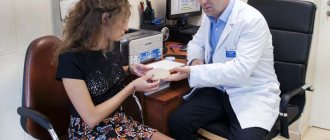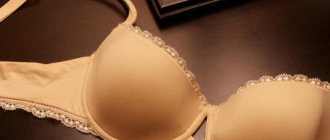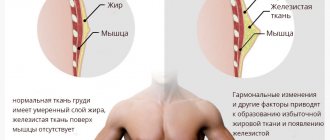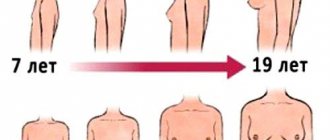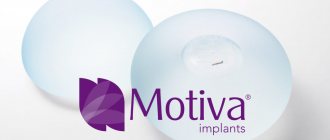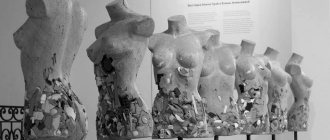A mastectomy is a radical operation to remove the breast cancer.
It is a highly effective way to combat breast cancer, but for many patients its aesthetic consequences become the cause of serious psychological problems: psychological complexes, depression, problems in intimate life. This is where reconstructive plastic surgery comes to the rescue, with the help of which the mammary gland can be restored after remission.
Breast reconstruction surgery after a complete mastectomy takes place in two stages: first, the breast volume is restored, then the nipple and areola are reconstructed.
The average duration of surgery for reconstruction of one breast is 2 hours. Most patients return to their normal rhythm of life within 2 months.
What is a mastectomy?
Treatment of breast cancer involves surgery to remove the tumor, since even aggressive therapy gives a positive result only in exceptional cases and poses a high risk of recurrence with subsequent rapid growth.
Types of mastectomies
| Kinds | Characteristic |
| Simple | Removal of the breast with fascia, but without removal of the pectoral muscles |
| According to Madden | Removal of the breast with axillary tissue, but without removal of the pectoral muscles |
| By Patey | Removal of the mammary gland with axillary tissue and pectoralis minor muscle |
| Extended radical | Removal of the mammary gland and parasternal lymph nodes. All fatty tissue around the operated area and the pectoralis major and minor muscles are also removed. |
| According to Halstead | Removal of the mammary gland, fatty tissue, pectoralis major and minor muscles. |
At the first stage, it is possible to perform an organ-conserving operation (lumpectomy), in which the tumor itself or formation is removed with partial resection of the organ. This method of treatment is not always justified, so oncologists often recommend a more radical method - mastectomy.
Operation “mastectomy” is a surgical intervention during which the entire mammary gland is removed with all its components (fat tissue, pectoral muscles and lymph nodes). Radical measures are necessary to eliminate the risk of cancer cells persisting in the preserved breast tissue.
Reconstruction with distant flaps
This reconstruction method is used in cases of extensive mastectomy, in which most of the soft tissue is removed. Distant flap breast reconstruction typically uses flaps based on either the rectus abdominis muscle (TRAM flap) or the latissimus dorsi muscle flap (TL flap). In some cases, microsurgical techniques can also be used to transplant a lower gluteal flap, an outer or inner thigh flap, a parailiac flap, and others.
Indications for breast removal surgery
Surgery to remove the mammary glands in women is carried out only after final confirmation of the diagnosis of breast cancer, determination of all the features of the clinical picture and characteristics of the tumor.
Radical removal of the mammary glands for cancer is performed when indicated:
- lack of positive results from organ-preserving treatment;
- contraindication to lumpectomy;
- the tumor is more than 5 cm in size;
- formation of multiple nodes or cysts in the breast;
- relapse after breast-conserving surgery;
- preservation of cancer cells after previous surgery;
- accompanying purulent process;
- tumor disintegration;
- fibroepithelial tumor.
A mastectomy can be performed on both breasts to prevent cancer if the patient has BRCA mutations or pain in the other breast.
Contraindications
Plastic correction of breast tissue after oncology involves a number of contraindications that make the operation impossible or dangerous to health:
- Recurrent tumor
- Minority
- Hemophilia
- Infection
- Heart failure
There are also contraindications specific to certain reconstruction techniques. For example, performing plastic surgery using a TRAM flap is extremely difficult if the patient smokes or is obese.
Types of mastectomy
At the Yusupov Hospital, removal of a malignant breast tumor is carried out after a complete preliminary examination at 2 and subsequent stages of the disease. Depending on the characteristics of the formation, the oncologist surgeon determines the method by which the operation will be performed. During surgery, the mammary gland is completely removed, but depending on the clinical picture, partial tissue preservation is possible.
Types of mastectomy:
- radical;
- modified radical.
Radical surgery for breast cancer in women involves complete removal of the mammary gland, small and large muscles and all three levels of lymph nodes. This technique is used mainly in identifying metastases or for palliative purposes, when treatment is carried out to maintain and facilitate the life of a patient with terminal stage cancer.
Modified mastectomy also has a radical direction, but allows, depending on the technique, preservation of one or both muscles, lymph nodes (partially or completely). A modified type of operation makes it possible to avoid serious deformation of the chest, disruption of the body (due to removal of lymph nodes) and preserve the possibility of breast plastic surgery for its reconstruction.
What is contracture?
After surgery, a thin fibrous capsule is formed around the implant.
But in rare cases, dense fibrous tissue forms, which causes discomfort and changes the shape of the breast. Capsular contracture is one of the most common complications of breast augmentation surgery. Changes caused by capsule hardening often cannot be noticed immediately; examination by a mammologist is the best way to diagnose them.
In the early stages of the capsule formation process, conservative treatment is possible - massage, taking anti-inflammatory drugs, physiotherapy.
Skin-sparing radical mastectomy with simultaneous reconstructive plastic surgery
Modern surgery has the ability to perform skin-sparing mastectomy with complete removal of all subcutaneous tissue and preservation of the outer layer of the dermis, nipple and areola. Such an operation is possible only if there are no cancer cells in the skin tissues.
Preservation of the skin allows reconstructive plastic surgery to be performed simultaneously with mastectomy. The two-stage operation involves removing the tumor and breast tissue and installing an artificial implant. The size and shape of the implant are selected before surgery.
Performing one-stage reconstruction after mastectomy has many advantages. A woman will not have to experience psychological discomfort due to the absence of breasts, which is often the reason for refusing surgery. There is no need to wait for tissue repair, expanders, or repeat surgery for breast reconstruction. It has also been proven that the immediate installation of a permanent implant does not affect the risk of breast cancer recurrence and does not complicate monitoring of tissue condition.
Breast Augmentation: Frequently Asked Questions
Will I be able to breastfeed? Many women breastfeed after breast augmentation surgery. To date, studies show that the silicone content in the milk of women who have had breast enlargement with implants does not exceed the same level in the milk of women without implants. What will happen during pregnancy? Every woman's body is different, so everyone's results will be different, both before and after pregnancy. Your breasts will increase in size and will undergo all the normal changes that occur during pregnancy. The degree of breast enlargement depends on the individual characteristics of the body, as well as the size of the implant.
How long does a breast augmentation implant last on average? Breast enlargement implants do not have an expiration date, so if the implant does not cause any discomfort, then there is no need to replace it.
Is the silicone used in breast implants safe? According to experts from the European and International Committee for Quality Control of Medical Technologies and Products (EQUAM) intended for plastic surgery, silicone gel is the best filler for implants; there is no better alternative today. Additional medical studies have found no link between silicone gel-filled breast implants and cancer or other breast diseases. These studies confirm previous findings. Breast implants filled with silicone gel do not adversely affect pregnancy, embryo development, breastfeeding, or the health of breastfed children.
Are breast implants filled with soybean oil safe? The European and International Committee for Quality Control of Medical Technologies and Products (EQUAM) states that implants filled with soybean oil contain substances harmful to the human body. To date, only a portion of the implants filled with soybean oil have been removed. EQUAM emphasizes the need for urgent removal of soy implants. Long-term follow-up of patients in this group is recommended.
How long after breast augmentation surgery can I resume exercise and engage in activities that require significant physical exertion? The best adviser in this matter is a doctor. It will tell you how long you should abstain from exercise, and when and how to resume activity. The duration of the rehabilitation period after breast augmentation varies from person to person. In general, the greatest discomfort is felt in the first few days. On average, it takes women 4-6 weeks to fully return to their normal activities.
Sweat has an adverse effect on the healing process of the incision stitch, so you should avoid physical activity and exposure to the sun until the stitch has healed and tightened. Don't overwhelm yourself with physical exercises, especially those that involve your upper torso. Let your body rest and gain strength. Swelling around the implant should be minimized.
Swimming in a Jacuzzi or regular bath is allowed no earlier than a month after surgery. During the first two weeks, do not get the incision seam wet.
Before resuming regular exercise, you should consult your doctor. Walking is generally recommended to stimulate circulation. The larger the implant size, the heavier your breasts. When running, you should wear a supportive bra to prevent stretch marks and the development of ptosis (sagging breasts).
When can I start tanning after breast augmentation? Tanning, in a solarium or in the open sun, does not harm the implant, but can make suture scars more visible. They should be protected from sunlight or ultraviolet rays for at least a year after surgery. Otherwise, they may become irreversibly darkened.
In order not to provoke the formation of a fibrous capsule, it is not recommended to be exposed to ultraviolet radiation for the first three months after surgery, either under the sun or in a solarium.
When exposed to the sun, the implant may heat up, but it cools down more slowly than your body.
When can I wear an underwire bra again after breast augmentation surgery? As a rule, doctors do not recommend wearing such a bra earlier than 3 months after breast augmentation surgery. The fact is that at this time, scar tissue forms around the implant, so the pressure exerted by the bones can lead to the appearance of irreversible cosmetic defects where they are pressed into the tissue. After the specified time, you put on a bra with wires, but not all the time, to avoid squeezing.
Will my breasts retain the same mobility after breast augmentation? It all depends on many factors, for example, the type of implant, the dissection of the pocket, the anatomical structure of your body, the presence and degree of capsule contracture. For many women, the breast remains soft and mobile after augmentation; for others, the implant creates a feeling of greater density and is less mobile than before the operation.
How much does a breast enlargement implant weigh? The weight of a breast enlargement implant depends on its size and filling volume. A 250 cm3 implant filled with 250 cm3 of gel weighs approximately 250 g.
Will I have stretch marks on my skin after breast augmentation surgery? Implantation can cause skin stretch marks, but this is rare. To prevent this type of defect, you can use a smaller implant; it will not cause stretching of the skin.
What effect does smoking have on the wound healing process after breast augmentation surgery? Smoking causes constriction of blood vessels, impairing blood supply and limiting the delivery of oxygen to the tissues of the operated area. For rapid healing, tissues must be well supplied with blood and receive enough oxygen with it. With poor blood supply, healing is slow. Doctors do not agree on the duration of the period of abstinence from smoking before and after surgery. According to various sources, it ranges from 5 to 12 weeks before and the same after surgery. In any case, you should clarify this issue with your doctor.
What are the possible side effects of breast augmentation? The appearance of a fibrous capsule around the implant, which is perceived by the patient as a thickening of the soft tissue of the breast. World statistics show that this happens in 4% of women undergoing surgery. In this case, a capsulotomy is performed. The lowest risk of contracture formation is observed when installing silicone implants with a polyurethane coating.
Does nipple sensitivity decrease after breast augmentation? After breast augmentation surgery using an implant, the sensitivity of the skin, nipple and breast as a whole may change. Changes vary widely, up to the complete absence of any sensation in the nipple and breast.
Should I achieve my ideal body weight before breast augmentation surgery? It is advisable that at the time of breast augmentation surgery your weight is close to ideal. If you lose significant weight after breast augmentation surgery, your body proportions will change and the results will no longer be satisfactory. There may be some sagging of the breasts (ptosis) and a decrease in their size. A significant increase in body weight can lead to an increase in breast size.
I'm already over fifty. What is the age limit for breast augmentation surgery? It is not age that is important, but general health.
How much does breast augmentation cost? You can find up-to-date information on prices for breast surgery in the “Price List” section on the clinic’s website. The indicated amount includes the cost of surgery, implants, anesthesia, hospital stay, compression garments, and preoperative examination.
Radical mastectomy with simultaneous allomammoplasty
Removal of one breast followed by reconstruction will result in asymmetry and a pronounced difference between the two breasts. In order to avoid such a defect, before undergoing a mastectomy, a woman can choose a plastic surgery method that will involve correction of both glands.
If there is a risk of developing cancer in the second breast, then a mastectomy of both mammary glands and subsequent installation of implants would be advisable. In the absence of indications for removal of the second breast, the surgeon may recommend performing a one-stage allomammoplasty aimed at correcting the preserved gland.
Allomammoplasty is a surgical breast surgery that involves changing the shape and size of the mammary gland. During the operation, muscle and skin tightening, fat tissue removal (to reduce size) or installation of an implant (to increase size) can be performed. This method allows you to achieve symmetry between the glands and get rid of the defects that existed before the operation (lack of volume, prolapse, excessive volume, etc.).
Prevention of breast diseases
Enhancement mammoplasty is not associated with an increased risk of breast cancer. But having an implant may impair the ability of mammograms or ultrasounds to detect cancer.
At the appointment, the mammologist first performs a manual examination. Next, the gland tissue is examined using ultrasound. At the same time, fibroadenomas are equally well visualized on ultrasound in women with and without implants.
When performing an ultrasound of the gland with breast implants, the doctor evaluates the morphology, contour, contents and tissues of the implant and the armpits. The transverse and longitudinal ratio of the implant is calculated; The smoothness or waviness of the shell, the uniformity of the implant lumen and signs of granulomas are checked. An ultrasound also examines the lymph nodes in the axillary area.
We recommend that you evaluate your breast health using ultrasound:
- If your implants are more than 7 years old,
- Have you recently injured your chest?
- You are concerned about the condition of your mammary glands.
Preparing for surgery
A mastectomy is prescribed by an oncologist if there are indications for surgery. The first stage of preparation for surgery to remove the mammary gland with a diagnosis of cancer is a consultation with the surgeon, who decides to perform the operation. When the date of mastectomy is determined, the doctor refers the patient for diagnostics necessary to possibly identify contraindications to the operation.
Diagnostics include:
- general analysis of urine and blood;
- specific blood tests (biochemistry, coagulogram, blood group, etc.);
- fluorography;
- electrocardiogram.
To determine the clinical features of the pathology and characteristics of tumor development, ultrasound of the mammary glands, biopsy and histology of the tumor, and mammography are performed. A consultation with an anesthesiologist is required to select the method of induction of anesthesia and the anesthetic drug.
The patient is recommended to stop smoking and drinking alcohol 14 days before the mastectomy, and stop taking medications that thin the blood. Stop eating 10–12 hours before, and do not drink any liquid on the day of surgery. Such restrictions are associated with the use of general anesthesia.
Breastfeeding and silicone
After endoprosthetics, you should not become pregnant for about six months, otherwise the shape of the breast may change for the worse. Then there are no restrictions. You can breastfeed with implants, says the doctor.
“The operation does not damage the function of the mammary gland either anatomically or physiologically. To maintain your shape during pregnancy, you should wear comfortable compression garments throughout the entire period of bearing a child and while breastfeeding. It is also important to monitor your weight. Among my patients there are those who, after endoprosthetics, gave birth to three children, and their breasts still look good; they did not undergo a second operation,” says Olga Mishutkina.
How is the operation performed?
At the Yusupov Hospital, mastectomy surgery for patients diagnosed with breast cancer is performed by highly qualified surgeons with impeccable years of experience in performing similar operations.
The course of the operation may vary depending on the technique used. The operation takes place under general anesthesia and takes from 2 to 3 hours, depending on the indications and the manipulations performed.
The main stages are:
- disinfection of the surgical area;
- gaining access to internal tissues (making an incision);
- tissue removal (in whole or in part);
- installation of drains at the incision site;
- suture and bandage.
With one-stage plastic surgery, all corrective manipulations are performed after completion of the main stages of removing tissue affected by the tumor or metastases.
Rehabilitation
The use of general anesthesia and the complexity of the operation require medical monitoring of the woman’s condition for at least 2 days. In the 24-hour inpatient department of the Yusupov Hospital, patients are constantly monitored by qualified medical staff and doctors.
After discharge, the rehabilitation period begins, which lasts up to 2 months. Sutures are removed after 10–14 days. Throughout this period, to avoid complications, it is necessary to follow the recommendations of the oncologist.
To exclude recurrence of breast cancer or timely diagnosis of oncology, it is recommended to visit the attending oncologist in the first year and take tests every 3 months. Later, they visit a specialist once every 6 months.
Why do implants rupture?
Implant rupture is the result of strong physical impact. For example, a blow. However, implant replacement is not always required urgently.
“One of my patients had an implant rupture after a fall from a height, but the connective tissue capsule that forms around the implant during the rehabilitation period remained intact. In addition, modern implants do not leak and do not saturate tissues. Therefore, we decided to wait until the fall,” the doctor commented.
A connective tissue capsule is formed from your own connective tissue around the implant during two months of rehabilitation. The body “envelops” the foreign element like a dense bag. This capsule is thin, but quite durable.
Advantages of mastectomy at Yusupov Hospital
The mastectomy operation at the Yusupov Hospital in Moscow is performed by a highly qualified oncologist surgeon. The surgery clinic is equipped with operating rooms with innovative equipment, which allows us to be confident in the results and the absence of complications.
Benefits of breast cancer treatment in our hospital:
- own diagnostic laboratory;
- modern methods of hardware diagnostics;
- 24-hour hospital.
Our clinic offers affordable prices for mastectomy with one-stage breast surgery. One operation will remove cancerous tissue and give you beautiful, perfect breasts. The main thing to understand is that mastectomy is the most effective method of treating breast cancer and preventing tumor recurrence.
Lift or reduction?
If the breasts are sagging and a woman is no longer satisfied with their shape, a breast lift can be done. Doctors work only with the skin, and do not touch the gland tissues themselves. After a breast lift, the breasts retain their beautiful shape for quite a long time. And even breastfeeding, provided all conditions are met (compression garments and normal weight), does not particularly affect its shape.
However, this is an individual question: no one can promise that breasts will retain their shape forever after a lift. Repeat surgery may be required.
Reduction – breast reduction – is one of the most difficult operations in mammoplasty. Doctors recommend stopping breastfeeding after such an intervention. The fact is that during reduction, the doctor removes part of the glandular tissue, and the ducts may be damaged. The milk may arrive, but there will be nowhere for it to go, and this is fraught with serious complications, the doctor explains.

